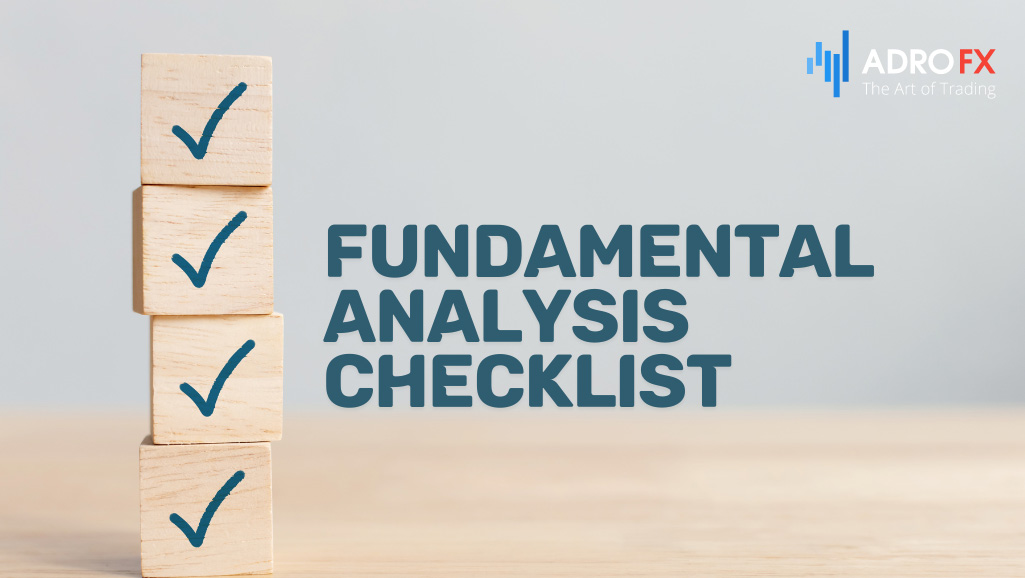Trader's Checklist for Successful Trading

Trading in financial markets involves buying and selling various financial instruments, such as stocks, currencies, commodities, and derivatives, with the goal of generating profits. This dynamic activity occurs across global exchanges and is driven by factors like economic data, geopolitical events, and investor sentiment. Whether you're a seasoned investor or a novice trader, navigating these markets requires careful planning and strategic decision-making.
One crucial tool for achieving trading success is a comprehensive checklist. A checklist serves as a structured roadmap, helping traders stay organized and disciplined in their approach. It ensures that critical steps, from market analysis to risk management, are consistently followed. By incorporating a checklist into your trading routine, you can enhance decision-making, mitigate risks, and ultimately improve your trading outcomes.
Setting Up Your Trading Environment
To optimize your trading environment, start by selecting a reliable trading platform that suits your needs. Consider factors such as ease of use, available features, real-time data access, and customer support. Whether you prefer a web-based platform, desktop software, or mobile app, the platform should align with your trading style and technical requirements.
Charts and technical analysis tools play a crucial role in decision-making. Configure your charts with relevant time frames and technical indicators like moving averages, RSI, and MACD. Customizing these settings helps in analyzing market trends, identifying support and resistance levels, and making informed trading decisions based on technical analysis.
Establishing a consistent trading routine is essential for maintaining discipline and optimizing performance. Define your trading hours, conduct thorough pre-market analysis, review open positions regularly, and maintain detailed trading journals. A structured routine helps minimize emotional trading, staying focused on trading objectives, and improving overall trading efficiency.

Understanding Your Trading Goals and Risk Tolerance
To embark on a successful trading journey, it’s essential to start with a clear understanding of your trading goals and risk tolerance. Your trading goals define what you aim to achieve through trading - whether it's generating regular income, building long-term wealth, or achieving specific financial milestones. These goals can influence your trading style, strategy, and the types of assets you trade.
Equally important is assessing your risk tolerance, which determines how much volatility and uncertainty you can comfortably handle in your trading activities. Risk tolerance is influenced by factors such as your financial situation, investment experience, time horizon, and personal comfort with market fluctuations. Understanding your risk tolerance helps in defining the level of risk you're willing to take on each trade and ensures that your trading approach aligns with your overall financial objectives.
Developing a Trading Plan
A robust trading plan is a cornerstone of successful trading. It serves as a comprehensive roadmap that outlines your approach to trading, from identifying opportunities to managing risks and executing trades. Here’s why a trading plan is crucial:
- Structured Approach
A trading plan provides a disciplined and structured approach to trading. It defines clear entry and exit criteria based on technical or fundamental analysis, ensuring that each trade is executed with a purpose. - Entry and Exit Rules
Define specific entry points that signal when to initiate a trade, taking into account technical indicators, chart patterns, or fundamental triggers. Similarly, establish exit rules that determine when to close a position to lock in profits or cut losses. - Position Sizing
Determine the appropriate position size for each trade based on your risk tolerance and the potential reward-to-risk ratio. This ensures that you allocate capital wisely and avoid overexposure to any single trade. - Risk Management Strategies
Implement effective risk management techniques, such as setting Stop Loss orders to limit potential losses and using trailing stops to protect profits as a trade moves in your favor. Diversifying your portfolio across different asset classes and markets can also mitigate risk. - Adaptability
A trading plan should be adaptable to changing market conditions and evolving trading strategies. Regularly review and update your plan based on performance analysis and market insights to optimize your trading approach over time.
Also read: Crafting An Exceptional And High-Performing Day Trading Plan
Technical Analysis Checklist
Technical analysis is a powerful tool used by traders to analyze historical price data and predict future price movements. Here’s a comprehensive technical analysis checklist to enhance your trading decisions:
- Trend Identification
Identify prevailing market trends using trendlines, moving averages, and price patterns. Understanding the direction and strength of trends helps in aligning trades with the market momentum.
- Support and Resistance Levels
Pinpoint key support levels (where buying interest tends to be strong) and resistance levels (where selling pressure may halt upward movements). These levels help in identifying potential entry and exit points for trades.
- Technical Indicators
Utilize technical indicators, such as RSI, MACD, stochastic oscillators, and moving averages, to validate trading signals and gauge market sentiment. Each indicator offers unique insights into price momentum, trend reversals, and overbought/oversold conditions.
- Chart Patterns
Incorporate chart patterns, such as head and shoulders, triangles, double tops/bottoms, and flags, to identify potential breakout or reversal opportunities. Chart patterns provide visual cues about market sentiment and potential price movements.
- Candlestick Analysis
Analyze candlestick patterns, such as doji, engulfing patterns, and hammers, to assess market sentiment and predict potential price reversals or continuations. Candlestick patterns offer insights into buyer-seller dynamics within specific trading periods.
By integrating these elements into your technical analysis checklist, you can enhance your ability to make informed trading decisions, improve timing for entry and exit points, and optimize your overall trading strategy for consistent profitability in the financial markets.

Fundamental Analysis Checklist
Fundamental analysis is essential for understanding the broader economic factors that influence market movements. Here’s a comprehensive fundamental analysis checklist to guide your trading decisions:
- Economic Indicators
Analyze key economic indicators such as GDP growth rates, employment reports (e.g., Nonfarm Payrolls), inflation rates (e.g., CPI), and consumer confidence indices. These indicators provide insights into the health of an economy and its currency's strength.
- Geopolitical Events
Monitor geopolitical events such as elections, trade negotiations, and geopolitical tensions. These events can impact market sentiment and influence currency movements, particularly in regions directly involved.
- Central Bank Policies
Understand the monetary policies of central banks, including interest rate decisions, quantitative easing programs, and forward guidance. Central bank policies have a significant impact on currency valuations and market expectations.
Risk Management Checklist
Effective risk management is crucial for preserving capital and achieving long-term trading success. Here’s a risk management checklist to help mitigate potential losses:
- Stop Loss Orders
Set clear Stop Loss orders for every trade to limit potential losses. Adjust Stop Loss levels based on market volatility, position size, and your risk tolerance.
- Profit Targets
Define profit targets to lock in gains and avoid letting profitable trades turn into losses. Take partial profits if the market moves in your favor while allowing the remainder to run with trailing stops.
- Diversification
Diversify your portfolio across different asset classes, currencies, and geographical regions. This reduces overall portfolio risk and cushions against losses from individual trades or market sectors.
- Managing Leverage
Use leverage judiciously and within your risk tolerance. Avoid overleveraging positions, as it can amplify both gains and losses. Understand margin requirements and maintain sufficient liquidity to cover margin calls.
- Disciplined Trading Practices
Adhere to disciplined trading practices, including maintaining consistent position sizes, avoiding impulsive trades based on emotions, and following your trading plan rigorously. Consistency in execution minimizes emotional bias and enhances decision-making.
Psychological Checklist
Psychological discipline is critical for maintaining consistency and emotional balance in trading. Here’s a psychological checklist to enhance your trading mindset:
- Emotional Balance
Manage emotions such as fear, greed, and impatience by maintaining a rational and disciplined approach to trading. Avoid making impulsive decisions based on emotional reactions to market fluctuations.
- Overcoming Trading Biases
Recognize and overcome common trading biases such as confirmation bias (seeking information that confirms preconceptions) and recency bias (placing undue emphasis on recent market events). Stay objective and base decisions on factual analysis rather than emotional reactions.
- Practicing Patience and Resilience
Trading involves periods of both wins and losses. Develop patience to wait for favorable trading opportunities based on your strategy, and resilience to bounce back from setbacks or losing streaks without losing confidence.
Also read: The Psychology Of Trading: How To Manage Your Emotions
Execution Checklist
Executing trades effectively is key to translating analysis into profitable outcomes. Here’s an execution checklist to optimize your trading process:
- Implementing Trades
Execute trades according to your trading plan, adhering to predefined entry and exit criteria based on technical or fundamental analysis. Ensure trades align with your risk management strategy and financial goals.
- Monitoring Trade Progress
Monitor trade progress closely after execution, tracking price movements, market conditions, and relevant news developments. Stay informed about factors that could impact your trade outcomes.
- Adjusting as Needed
Be proactive in managing trades by adjusting Stop Loss levels, taking partial profits, or closing positions based on evolving market conditions or changes in your analysis. Flexibility in trade management improves risk-adjusted returns and capital preservation.
- Reviewing Trade Outcomes
After closing a trade, conduct a thorough review and analysis of trade outcomes. Evaluate whether trades met their objectives, identify strengths and areas for improvement in your trading strategy, and apply lessons learned to future trades.
By incorporating these checklists into your trading routine, you can enhance decision-making, manage risks effectively, maintain psychological discipline, and optimize trade execution for consistent success in the financial markets.

Review and Continuous Improvement
Regularly evaluating your trading performance and refining strategies are essential for continuous improvement. Here’s how to effectively review and enhance your trading approach:
- Evaluating Trading Performance
Regularly review your trading performance by analyzing trade outcomes, profitability, and adherence to your trading plan. Identify patterns of success and areas for improvement based on objective metrics such as win-loss ratios, risk-adjusted returns, and consistency in execution.
- Learning from Mistakes
Acknowledge and learn from trading mistakes and losses. Identify common pitfalls, such as emotional decision-making or neglecting risk management principles, and develop strategies to avoid them in future trades. Maintain a growth mindset that embraces learning from experiences.
- Adapting Strategies
Adapt your trading strategies based on insights gained from performance reviews and market analysis. Modify entry/exit rules, adjust risk management techniques, or explore new trading approaches that align with changing market conditions or personal trading goals.
- Seeking Ongoing Education
Stay updated with market trends, economic developments, and technological advancements in trading. Continuously educate yourself through reputable sources, attend webinars, read industry publications, and participate in trading forums to expand your knowledge base.
Ready to take your trading to the next level? Open a trading account with AdroFx and start trading confidently across global markets. Register Now to get started!
Conclusion
In conclusion, a trader’s checklist serves as a foundational tool for achieving consistent success in financial markets. By systematically addressing key aspects of trading, from technical analysis to risk management and psychological discipline, traders can enhance decision-making and mitigate potential risks.
Consistent application of a trader’s checklist fosters disciplined trading practices and improves overall trading performance. It empowers traders to capitalize on opportunities while managing risks effectively, thereby enhancing the likelihood of achieving long-term profitability.
To excel in trading, prioritize the development and regular use of your trader’s checklist. Embrace continuous improvement by evaluating performance, learning from experiences, and staying informed about market dynamics. By doing so, you can navigate the complexities of the financial markets with confidence and resilience, positioning yourself for sustained success over time.
About AdroFx
Established in 2018, AdroFx is known for its high technology and its ability to deliver high-quality brokerage services in more than 200 countries around the world. AdroFx makes every effort to keep its customers satisfied and to meet all the trading needs of any trader. With the five types of trading accounts, we have all it takes to fit any traders` needs and styles. The company provides access to 115+ trading instruments, including currencies, metals, stocks, and cryptocurrencies, which make it possible to make the most out of trading on the financial markets. Considering all the above, AdroFx is the perfect variant for anyone who doesn't settle for less than the best.










